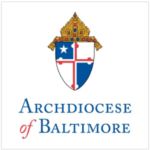The Archdiocese of Baltimore announced today the results of an 18-month study of 22 Catholic schools in and around Baltimore. Conducted by consulting firms Ayers Saint Gross, DataStory and Fielding Nair International, the study examined school facilities, enrollment, and projected demographic data and potential areas of growth.
The study was conducted to help guide the Archdiocese’s future investments in Catholic education, and further its mission of Catholic education throughout the Archdiocese, for all children, regardless of religion or financial means. The study’s timing coincided with the stabilization of system-wide enrollment, which was a goal of the 2010 Blue Ribbon Committee Report on Catholic Schools.
Approximately $86 million in facilities investment opportunities were identified for the Archdiocese after reviewing the condition and effectiveness of educational facilities in the catchment area. The study also identified areas of projected population growth where the Catholic school system could meet a growing need. The Archdiocese has already taken steps toward a feasibility study to fund these two priorities.
The study identified three schools for closure due to under-enrollment and/or facility condition. Two elementary schools and one high school will close at the end of the current school year: John Paul Regional School in Woodlawn, St. Thomas Aquinas School in Hampden, and Seton Keough High School in Southwest Baltimore. Holy Angels Catholic School, which has been sharing facilities with Seton Keough, along with participants in Operation Teach, a program for young Catholic school teachers who live in community on the Seton Keough campus, will be relocated prior to the sale of the campus.
The study also identified one school for merger with a nearby Catholic school due to facility condition. Next year, St. Clement Mary Hofbauer in Rosedale will merge with St. Michael the Archangel School in Overlea. The two schools are 3.8 miles apart.
The Archdiocese of Baltimore Catholic School Board unanimously approved the decisions based on the master planning study at its October 5th meeting.
“Recent enrollment statistics suggest that our system is poised to grow,” said Mr. James Sellinger, Chancellor of Catholic Schools. “These decisions will allow us to invest dollars in areas that will keep Catholic schools competitive, attractive, and successful – such as facilities, technology, and tuition assistance. We are committed to ensuring Catholic schools remain exceptional and accessible, and to give the system a road map for growth in the years to come.”
The three closing schools have a total student population of 426 children. Of these, 71 will graduate from their schools at the end of the current school year, leaving 355 students to be placed in a new school next year. For every child whose school will not reopen after the current school year, there is a seat within the system’s remaining 65 Catholic schools. All receiving schools will be expected to honor the tuition rate of the student’s former school for at least the 2017-2018 school year and all archdiocesan financial assistance will follow the student throughout their time in the Catholic school system.
The Archdiocese invests approximately $13.5 million each year in Catholic schools.
The Archdiocese will work directly with the families of every affected student, beginning with a personal call to each family, to understand any specific needs or concerns that could pose a barrier to their continued education in a Catholic school. Likewise, the Archdiocese will make every effort to retain within the Catholic school system the 102 employees affected, or to help them gain employment outside the Catholic school system, should it be necessary or their desire.
“Though school closures can be an emotional and sad time, these difficult decisions are necessary in order for the Archdiocese to ensure that all children who desire a Catholic education are able to benefit from one, now and into the future. We recognize how disruptive these changes are and we will be there every step of the way to ensure the needs of affected students, families, and staff members are met,” said Dr. Barbara Edmondson, Superintendent of Catholic Schools.

